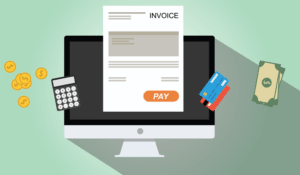
When you pay self-employment taxes, you actually get a tax deduction for your federal income tax filing. You can deduct 50% of your self-employment tax bill from your adjusted gross income and decrease the amount of taxes you owe. For example, if you calculate your self-employment taxes to calculate the taxpayers net earnings from self-employment, 92.35% is multiplied by: to be $2,000, you get a tax deduction of $1,000 of your taxable income. Depending on your tax bracket, this would save you between $100 and $370 on your tax bill. You do not make separate SECA tax payments and regular income tax payments; they are generally combined and paid together.
- This is the amount of your self-employment income subject to the self-employment tax.
- The term sole proprietor also includes the member of a single member LLC that’s disregarded for federal income tax purposes and a member of a qualified joint venture.
- Only those that are deemed ‘necessary and ordinary’ for the business can be deducted.
- You may need to pay self-employment tax if you’re a freelancer, an independent contractor or a small-business owner.
- However, if you expect to owe $1,000 or more in combined income tax and self-employment taxes, you’ll need to make estimated quarterly tax payments.
- State and local taxes may not require quarterly filing, and may have their own procedures for payments, so work with a tax professional to be sure you’re paying taxes correctly.
The only self-employed individuals who don’t have to pay taxes are those whose income falls below this threshold. The type of job makes no difference to the IRS; it all comes down to your income threshold. Once you have a total for your estimated taxes, you need a strategy for setting the money aside so you’re not surprised each quarter, or worse—at tax time. This guide will walk you through your self-employment tax calculation, showing you how to determine how much money you owe and how to walk through the process of paying taxes as a self-employed person.
Do I Need To Pay the SECA Tax?
To calculate your self-employment taxes, you first need to determine 92.35% of your net earnings. The result is your self-employment tax liability for the year. As mentioned earlier, not all business expenses can be deducted from gross income.

After that, you aren’t charged any additional Social Security tax. There is no limit on the Medicare portion of self-employment tax. So no matter how much you earn, the Medicare tax applies to all of your wages and self-employment income. If you’re self-employed, it’s important to maintain careful records of your income and expenses all year long. This approach will help you calculate your net earnings and determine your tax liability in advance.
Identifying Deductible Expenses
Quarterly taxes for businesses are due April 15th, June 15th, September 15th, and January 15th. If you’re unsure whether an expense is tax-deductible, run it by a tax professional. If your net earnings fall below the Social Security wage base of $142,800, you can calculate your self-employment tax quite easily. When you are self-employed, you are responsible for both the employer and employee side of taxes.
- To calculate your self-employment tax, start by finding your net earnings from self-employment.
- Quarterly estimated tax payments can be mailed using the printable vouchers in Form 1040-ES or use IRS Direct Pay to pay online.
- It’s also important to note that if you’re self-employed, you may have to file estimated taxes quarterly in order to avoid penalties from the IRS.
- Understanding the concept of net earnings is crucial for self-employed individuals as it forms the basis for calculating their tax obligations.
- It’s important to note that not all expenses can be deducted from gross income.
- You do not make separate SECA tax payments and regular income tax payments; they are generally combined and paid together.
If you recently started a business, you’ve undoubtedly heard of the self-employment tax. Dreaming of a world where self-employment taxes are simple and effortless?
Example of Net Earnings Calculation
As noted, the self-employment tax rate is 15.3% of net earnings in 2023. That rate is the sum of a 12.4% Social Security tax (also known as OASDI tax) and a 2.9% Medicare tax on net earnings. Let’s say your net income from self-employment in 2022 is $100,000.
